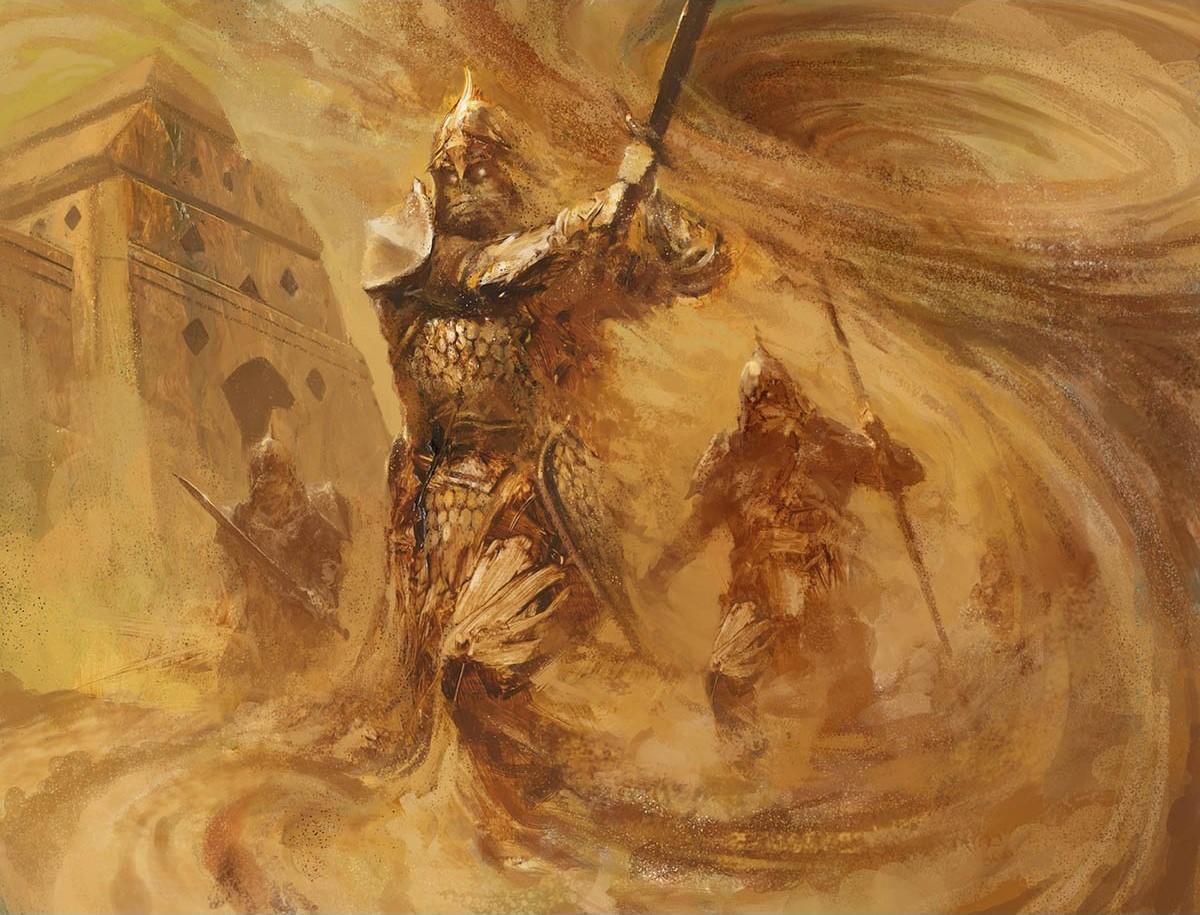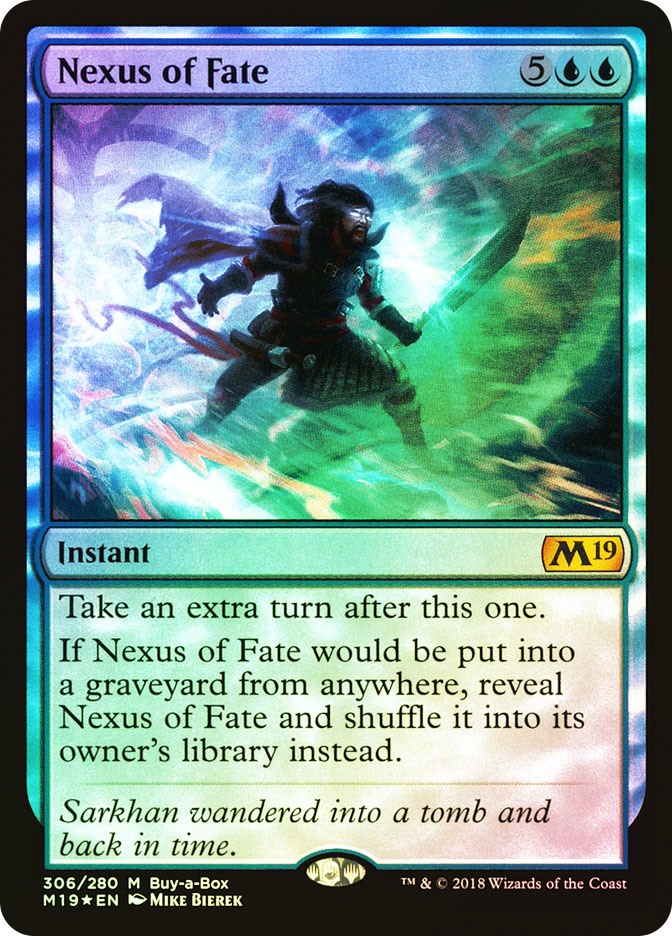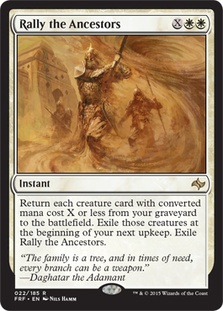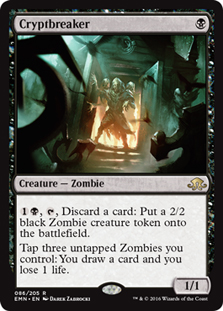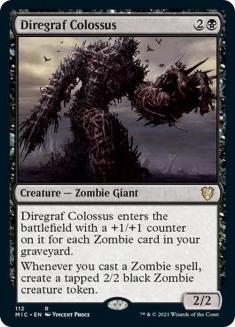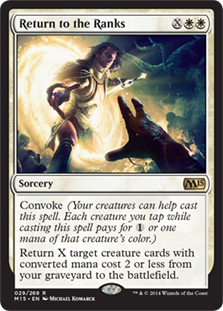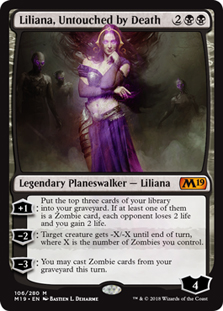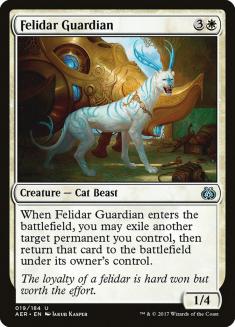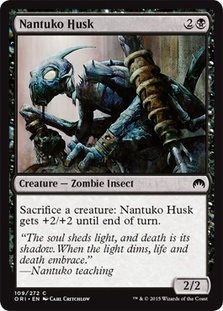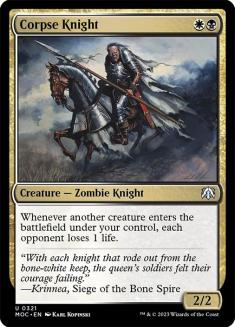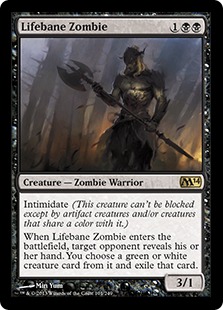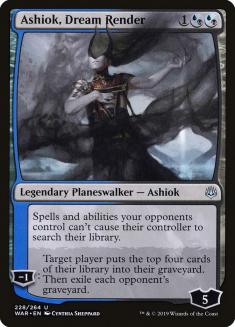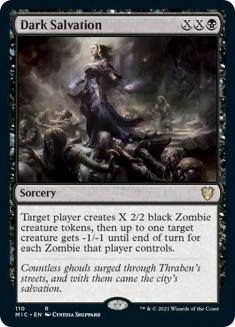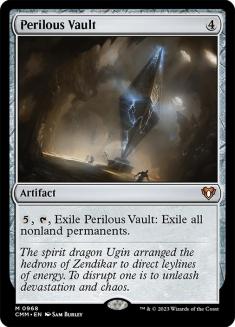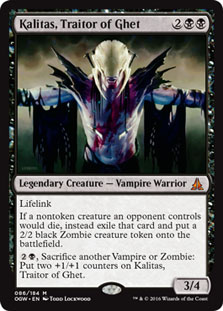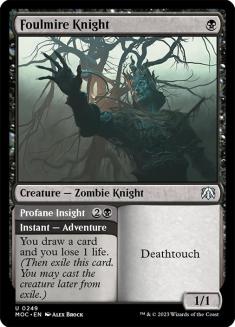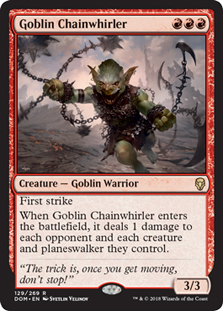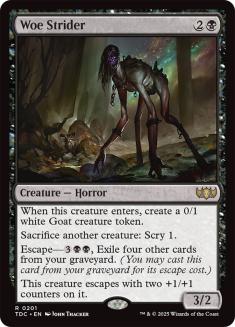It feels like Pioneer is looking a little bit different every time you look at it.
Every time something ends up being great or looking broken, something gets banned, and it’s back to square one. The best way to avoid something like this? Look to decks that abuse broken things without completely leaning on them.
During its tenure in Standard, Rally the Ancestors did something incredible: it was a combo deck that wasn’t. That’s to say it was a completely fair Collected Company deck that masqueraded as an unfair graveyard deck.
Creatures (28)
- 4 Nantuko Husk
- 4 Elvish Visionary
- 3 Grim Haruspex
- 3 Sidisi's Faithful
- 4 Jace, Vryn's Prodigy
- 3 Catacomb Sifter
- 4 Zulaport Cutthroat
- 3 Reflector Mage
Lands (24)
Spells (8)

One of the worst things that players would do against the Standard Four-Color Rally deck was sideboard in excess amounts of pointed graveyard hate and then simply die to a slew of Nantuko Husks and Reflector Mages. In Pioneer, it’s possible to do the same:
Creatures (25)
- 2 Nantuko Husk
- 4 Diregraf Colossus
- 4 Cryptbreaker
- 4 Wayward Servant
- 4 Stitcher's Supplier
- 4 Corpse Knight
- 3 Foulmire Knight
Planeswalkers (2)
Lands (22)
Spells (11)

This deck is incredibly different in the details, yet is ultimately doing something very similar to its Standard counterpart. While looking like a graveyard combo deck, it’s actually a deck built around two cards:
Cryptbreaker and Diregraf Colossus both have the same demand: play a ton of Zombies. This creates some obvious overlap between the two, but why is this relevant?
The core idea here is that both of these creatures necessitate removal from the opponent, or they’ll run away with a game on their own, either via Cryptbreaker doing an absurd Phyrexian Arena impression or Diregraf Colossus creating an army of Zombies. This incentivizes anybody trying to beat up on the deck to play spot removal in order to deal with these cards, which is then punished by the recursive elements of the deck:
Surprisingly, Rally the Ancestors isn’t always the most powerful piece of the puzzle in the archetype. Return to the Ranks has been particularly impressive, largely on the back of the fact that it can be cast off just a couple of lands and a bevy of creatures.
A few weeks ago, Ari Lax wrote about a version of this deck that goes hard on the combo aspect of the deck, but I’ve found that leaning to be less effective that simply being a creature deck with a great end-game. What he gets right, however, is that an aggro-combo hybrid is a great place to be in Pioneer.
Think of the deck as something analogous to the Four-Color Saheeli deck from Standard. It frequently leaned on the fair energy game of the deck until the last possible second, and then would steal games it might otherwise lose. The deck doesn’t need to win games with Rally the Ancestors or how the recursion effects work with Nantuko Husk. On the other hand, having the “I win!” button is obviously going to be valuable.
The biggest thing to practice with the deck is sequencing early creatures.
When to commit Cryptbreaker to the battlefield, for example, is going to shift from hand to hand. Whenever the plan is to cast three one-drops in the first two turns, you don’t want to deploy the Cryptbreaker until Turn 2. That way, you’re more likely to protect it from removal.
More traditional one-two-three curves, however, will demand casting Cryptbreaker on the first turn in order to get the activation as soon as possible.
Sequencing with Diregraf Colossus proves even more dynamic based on the matchup, moreso than the cards readily available to its controller.
Against something removal-heavy, sandbagging copies of Diregraf Colossus until after the third turn will pay dividends in two ways. It’s both going to come down as a larger threat, which in turn makes it more resilient to a ton of red-based removal in the format. On top of that, later turns in the game mean more mana, which means that it’s possible to cast Diregraf Colossus and immediately generate an army on the back of another pair of creatures coming down in the same turn.
In some of the less fair matchups such as Lotus Field, jamming a Colossus as early as possible will be the army-in-a-can necessary to actually slam the door shut while they’re still trying to develop.
A lot of these evaluations are going to come down to a nuanced version of role assessment and understanding what cards in a matchup you’re actually playing against. With a deck like this one, it’s all about figuring out which half of the deck to be leaning into and prioritizing accordingly.
Sideboarding
VS Azorius Control
Out:
In:
Azorius Control is going to be the most difficult matchup by a considerable margin, and takes a ton of reps to feel out when you’re supposed to be doing what with specific tools. The most important balance to constantly be aware of is committing enough to the battlefield to pressure a planeswalker while also not completely colding oneself to Supreme Verdict.
Foulmire Knight, for example, is frequently going to be an instant before it’s a creature, but in some of the faster Cryptbreaker draws, or draws that can punish an early Supreme Verdict with Return to the Ranks, casting it as an Eager Cadet is going to feel like an upgraded Lava Spike.
Fragmentize is generally going to have enough targets between Cast Out, Rest in Peace, and stray copies of Detention Sphere and Nyx-Fleece Ram that have been floating around. If you see more white creatures than Lyra Dawnbringer, you can look to Lifebane Zombie, but I’ve found its Latch Seeker version of the card to be underwhelming in the matchup, so a couple of Angels aren’t enough pull to bring them in.
VS Mono-Green Ramp
Out:
In:
This is a matchup where Orzhov Zombies is leaning into its Mono-Black Aggro impersonation. When it comes to sideboarding, there are a couple of decisions that are contingent upon current builds of Mono-Green Ramp, and are subject to change as the deck evolves:
In its current form, Mono-Green Ramp isn’t actually playing very many cards that search its library. Other than Nissa’s Pilgrimage, Ulvenwald Hydra, and Sanctum of Ugin, Ashiok isn’t going to have a real impact on the opponent’s gameplan and isn’t always going to work against Pilgrimage on the draw. With the deck leaning more and more into cards like Elvish Rejuvenator and Cavalier of Thorns, Ashiok isn’t the lockout it is against other ramp strategies.
Hitting a Cavalier of Thorns or Ulvenwald Hydra with Lifebane Zombie feels like cheating. That doesn’t even get into the fact that a 3/1 unblockable creature has reasonable play when adopting the role of a low-synergy, disruptive aggro deck in the matchup. Lifebane Zombie’s stock will go down if people move back to Oblivion Sower and more Eldrazi over the green creatures, but for now, it’s a card I’ve been happy with. Just watch out for Walking Ballista.
This is likely the matchup that most commonly has Dark Salvation’s secret mode: X equals zero. It isn’t incredibly frequent that sinking a ton of mana into Dark Salvation is relevant, as the later stages of the game aren’t the ones that are being saved by a pair of 2/2s, but having virtual copies of Ulcerate when filling out a mana curve is just what the doctor ordered against a deck with Llanowar Elves and roadblocks galore.
The biggest card to look out for in the matchup is Ugin, the Spirit Dragon. The fact that the deck’s sweeper of choice, Perilous Vault, also has an exile clause is the biggest reason that the plan is currently to sideboard out the graveyard synergy cards. Thoughtseize and pressure isn’t the prettiest plan, but it’s what we have for now. If Mono-Green Ramp continues its uptick in popularity, something as heavy-handed as Stain the Mind might become a necessity to be positive that Ugin won’t make an appearance.
VS Mono-Black Aggro
Out:
In:
The Mono-Black matchups comes down to prolonging the game and making things as resource-saturated as possible. Orzhov having the Zombie synergies that it does will have it come out ahead in fights that involve both players having an embarrassment of riches. The goal of Mono-Black Aggro is to trade resources until it is left with just enough left to pull across the finish line. Cards like Return to the Ranks and Dark Salvation serve to break that paradigm and make it difficult for Mono-Black to seal the deal before Orzhov can rebuild.
The make-or-break card in the matchup is Kalitas, Traitor of Ghet. It’s almost impossible for either deck to fight through an opposing copy that sticks around for any amount of time. On top of that, both players have enough Zombies and removal spells to ensure that Kalitas will grow to an unmanageable size in no time. When possible, try to sandbag removal for Kalitas and Rankle, as they’re the most difficult cards to beat.
VS Lotus Field
Out:
In:
This gives a basic idea of how to be sideboarding against linear combo decks: cut removal, add Thoughtseize. Trimming copies of Return to the Ranks is going to come up in matchups when the opponent isn’t really interested with grinding, and taking a turn off from attacking is a real cost.
The opponent opting out of grinding means that outside of Stitcher’s Supplier and Liliana, filling the graveyard isn’t really going to happen. This obviously hurts impact of the recursive elements until Nantuko Husk gets involved.
If attacking is important, convoking isn’t really doable, and Rally the Ancestors is going to be better at squeaking across for those last few points of damage.
This is a matchup that has Ashiok shutting off roughly the same raw quantity of cards, but the cards it’s combatting are more important than those in the ramp deck. It’s a difference between Lotus Field being able to find specific cards and taking away redundant material from Mono-Green Ramp. The former is a more effective method of fighting than the latter.
VS Mono-Red
Out:
In:
The sideboarding here basically comes down to sculpting a gameplan around prolonging the game as much as possible, and reducing the efficacy of the cards that line up the best against the us:
If enough resources trade with one another in the early game, Kalitas, Traitor of Ghet will run away with a game by himself. If the game goes long enough, a big Wayward Servant drain with Rally the Ancestors or Return to the Ranks will put the game out of reach for any red deck playing fair.
Frame all of your decisions around the long game, and things will end up resolving themselves as long as you end up casting more spells than the opponent over the course of the game.
The framing around these matchups should give a basic idea of how to posture and sideboard against most matchups, but that’s going to change as the texture of the format shifts over the coming weeks.
On Woe Strider
Earlier this week, we at Star City Games had the privilege of unveiling Woe Strider to the world, and as luck would have it, it was just in time to add a bit onto this article with a more combo-oriented version of Rally the Ancestors that utilized a better sacrifice outlet in the deck.
Creatures (29)
- 2 Nantuko Husk
- 4 Zulaport Cutthroat
- 4 Cryptbreaker
- 4 Wayward Servant
- 4 Stitcher's Supplier
- 4 Corpse Knight
- 3 Foulmire Knight
- 4 Woe Strider
Planeswalkers (2)
Lands (22)
Spells (7)

This is around the ballpark of where I’ll start my playtesting for a more combo-oriented version of the deck. I suspect there may be too many two-mana enablers, but pushing the themes of these decks is the best way to figure out if they’re worth pursuing.
What Woe-Strider does for the deck is emulate Catacomb Sifter without muddying the mana, and also working as the free sacrifice outlet that Nantuko Husk provided, while also generating something more valuable to a combo deck than a simple power and toughness boost.
Regardless, this deck is in its infancy and I’m confident in saying that it has legs. It’s all a matter of figuring out which half of the deck is better to lean into, and framing accordingly.

